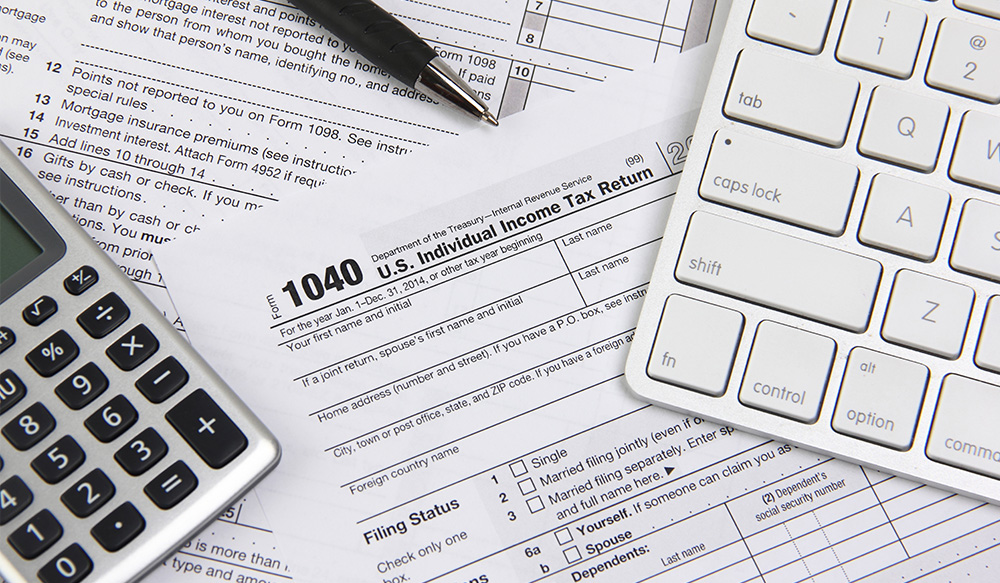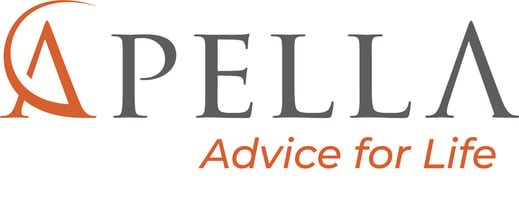Apella Wealth Blog

Top 10 Tips & Tricks: A Mid-Year Tax Review Checklist
A mid-year tax review is a smart move. It helps you avoid surprises come tax time and ensures you’re on track with estimated payments, withholding, deductions, and credits.
Would you like a personalized review? Your Apella Advisor can tailor this checklist to your situation and help you avoid unpleasant surprises next April.
Here’s a concise checklist and guidance to help you through it:
1. Check Your Withholding
- Use the IRS Tax Withholding Estimator to review your current withholding.
- If you experienced life changes (marriage, divorce, new job, side gig), update your 2025 Form W-4 with your employer.
- If you have stock options vesting this year, make sure you are withholding enough to avoid a nasty surprise tax bill next April.
2. Evaluate Estimated Tax Payments
If you’re self-employed or have significant income not subject to withholding (such as investment income or gig work), it’s important to work with your advisor to:
- Confirm your quarterly estimated tax payments are accurate.
- Ensure payments are made on time to avoid penalties. Federal due dates: April 15, June 17, September 16, and January 15, 2026.
- Use this helpful tool to calculate your IRS Estimated Tax Payments: irs.gov/payments.
- Make secure payments online through IRS Direct Pay.
3. Review Major Life Changes
Certain life events can significantly impact your tax situation. Any of these may affect your tax situation:
- Marriage, divorce or loss of a spouse
- Welcoming a new child: You may qualify for the Child Tax Credit and Child Dependent Care Credit
- Buying/selling a home
- Starting or selling a business
- Changing jobs or retiring
- Inheriting a tax-deferred retirement account
- Starting to receive a pension or Social Security benefits
Important Social Security Update for Public Employees:
If you’re among the over 3 million public employees (e.g., teachers, firefighters, police, federal civil servants) who were previously ineligible for Social Security benefits due to the Windfall Elimination Provision (WEP) and Government Pension Offset (GPO), these rules no longer apply as of January 2024.1
To receive benefits, you must first register with the Social Security Administration and provide your banking information. Once registered:
- You’ll receive a one-time retroactive lump sum payment covering January 2024 to the current date.
- Monthly Social Security payments will begin going forward. Register at: The United States Social Security Administration | SSA
Note that the retroactive lump sum will count as income in the year received (2025), potentially bumping you into a higher tax bracket and reducing tax credits. You will need to plan for a higher tax liability in 2025 and potentially higher Medicare premiums in 2027.
4. Maximize Retirement Contributions
- Review your current 401(k) contributions. If you can increase them to the maximum, it’s likely in your best interest, especially if you received a raise or a larger bonus this year. For 2025, the contribution limit is $23,000. Individuals age 50 and older can contribute an additional $7,500 in catch-up contributions. If you are between ages 60-63, you are eligible for a “super” catch up of $11,250.
- The annual contribution limit for IRA/Roth IRA is $7,000, with an additional $1,000 catch-up allowed for those ages 50 and over. You don’t have to wait until year-end to make these contributions. If the cash is available, go ahead and do it! Make sure you’re eligible first - Roth IRA eligibility is income-dependent. For 2025, eligibility begins to phase out at $146,000 of income for single filers and $230,000 for married couples filing jointly, based on 2025 IRS limits.2
- For children with part-time or summer jobs, encourage them to contribute to a Roth IRA using their summer job earnings. Parents can incentivize this habit by matching their contributions.
5. Health Savings Account (HSA) Contributions
If you have a high-deductible health plan (HDHP) it is wise to establish and contribute to a Health Savings Account (HSA), which offers triple tax benefits:
- Contributions are tax deductible
- Earnings grow tax-free
- Withdrawals are tax-free when used for qualified medical expenses
For 2025, the contribution limits are $4,300 for individuals, $8,550 for families, with an additional $1,000 catch-up contribution allowed for those ages 55 and older.3
6. Track Deductions and Credits
Be sure to save documentation for the following items, as they may help reduce your tax bill:
- Charitable donations (with receipts)
- Medical expenses (if you plan to itemize)
- Education expenses (eligible for the American Opportunity or Lifetime Learning Credits)
- Childcare costs (may qualify for the Dependent Care Credit)
7. Review Capital Gains and Investment Income
Discuss tax-loss harvesting with your advisor. When the stock markets are down, you may be able to harvest losses that offset your taxable capital gains income. Request an estimate of your taxable dividend and interest income for the year. This can be a significant source of income in retirement, and it’s important to understand the potential tax impact.
8. Review Tax-Advantaged Accounts
Make sure you’re maximizing the benefits of any tax-advantaged accounts you have:
- 529 Plans (for education): Review your contributions and consider increasing them if you’re not on track to meet your savings goals.
- Flexible Spending Accounts (FSAs): These are typically “use-it-or-lose-it.” Be sure to spend the remaining funds before year-end to avoid forfeiting the balance.
9. Small Business or Side Hustle?
If you earn income from freelance work, consulting, or a side business, make sure you’re planning ahead for taxes, not just scrambling in April.
- Track all income and expenses now throughout the year.
- Talk to your tax advisor about potential deductions and strategies, including:
- Section 179 deductions (for equipment or business purchases)
- Home office deduction
- Qualified Business Income (QBI) deduction
- Establishing a Solo 401(k) to make additional tax-deductible retirement contributions
10. Plan for Future Tax Legislation
The One Big Beautiful Bill Act (OBBBA, H.R. 1) was officially signed into law following Senate approval in July 2025. The bill makes permanent many provisions from the 2017 Tax Cuts and Jobs Act (TCJA), including lower individual income tax rates, an increased standard deduction, and expanded child tax credits. It also introduces a few new benefits aimed at supporting families and simplifying filing for small business owners.4
With the legislation now finalized, your planning team is actively reviewing its implications. We’ll incorporate any relevant changes into your year-end planning to help ensure your tax strategy remains well positioned under the new rules. Curious how the new One Big Beautiful Bill Act could reshape your tax future? Apella’s own Ed Richter will break down all the details in his upcoming article. Stay tuned for details.
Sources:
- gov “Social Security Fairness Act: Windfall Elimination Provision (WEP) and Government Pension Offset (GPO) update May 27, 2025
- Morningstar: IRS Announces New Income Limits for IRA Contributions in 2025 | Morningstar
- gov: Publication 969 (2024), Health Savings Accounts and Other Tax-Favored Health Plans | Internal Revenue Service
- com “Trump’s ‘One Big, Beautiful Bill’ With Trillions in Tax Cuts: What to Know” July 11, 2025 Trump’s One Big Beautiful Bill Summary: Key Tax Changes and Why It’s Controversial | Kiplinger
Disclosures:
Apella Capital, LLC (“Apella”), DBA Apella Wealth is an investment advisory firm registered with the Securities and Exchange Commission. The firm only transacts business in states where it is properly registered or excluded or exempt from registration requirements. Registration with the SEC or any state securities authority does not imply a certain level of skill or training. Please note the material is provided for educational and background use only. Moreover, you should not assume that any discussion or information contained in this material serves as the receipt of, or as a substitute for, personalized investment advice. All data is from sources believed to be reliable but cannot be guaranteed or warranted.
No current or future client should assume that any discussion or information contained in this material serves as the receipt of, or as a substitute for, personalized investment advice. As with any investment strategy, there is the possibility of profitability as well as loss.
Apella Wealth does not provide tax or legal advice and nothing either stated or implied here should be inferred as providing such advice.
Related Articles
Tips for Avoiding Taxes on Inherited Health Savings Accounts
The tax benefits of contributing to a Health Savings Account1(HSA), if you are covered by a high...Navigating Taxes as a Widow or Widower: A Practical Guide
Losing a spouse is one of life’s most difficult experiences, and the financial aftermath can feel...
